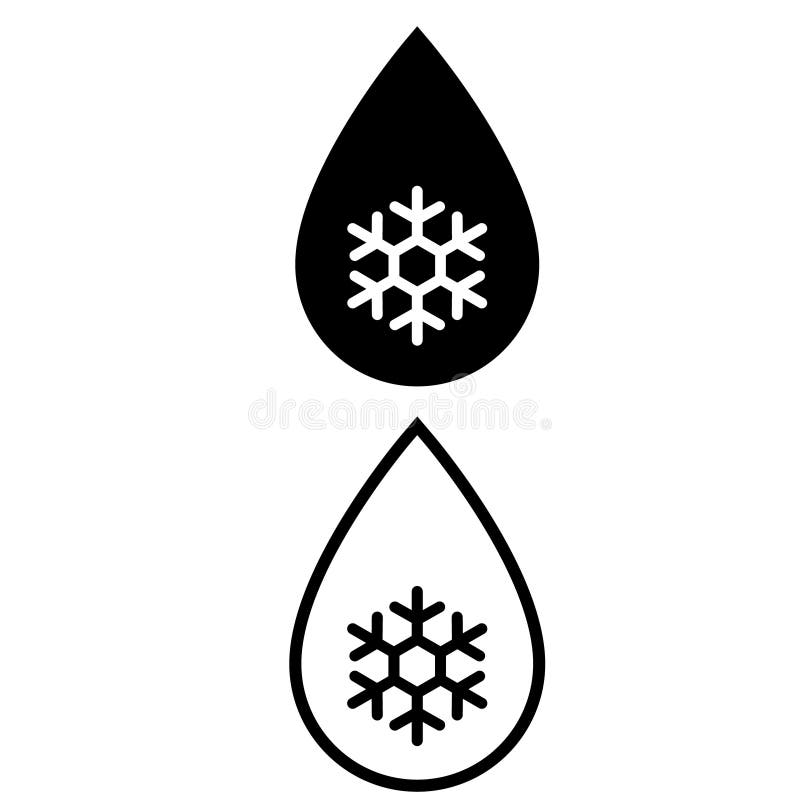
- #Water coolant symbol how to#
- #Water coolant symbol full#
- #Water coolant symbol crack#
#Water coolant symbol crack#
If this does happen, plain water inside the engine could freeze, expand and actually crack the engine block causing a leak and potentially irreparable or extremely costly damage.

It’s important to add this as it will stop the fluid freezing in cold temperatures over winter. Your car’s owner’s handbook should give you an idea how much coolant the vehicle holds, as well as the concentration of coolant anti-freeze needed. You wouldn’t want fresh coolant to go straight through once you top it up again…
#Water coolant symbol full#
Once all the engine coolant has been purged from the system (or as near as you can get to a full drain – a few drops don’t really matter) remember to do the radiator hose back up tight. So after you’ve drained it, pour it into a concealed container until you are able to dispose, because in hot summer months pets and wildlife may treat it as a nice thirst quenching drink. It is also important to know that Anti-freeze is very poisonous to animals. #Water coolant symbol how to#
Your local council waste center will be able to advise you on how to do this.

Undo the hose and leave it to drain into the bucket, disposing of the waste coolant in an ecological way. Have a bucket ready to catch all of the coolant, as the anti-freeze in it can be harmful to the environment, even in its diluted form.
Locate the lowest accessible point in the coolant system – this will generally be where a coolant hose attaches to the bottom of the radiator. This is purified and so doesn’t contain the contaminants that can damage your pipes.Įngine coolant systems need to be periodically drained and re-filled – it’s routine maintenance just like changing your brake fluid to make sure the coolant is in correct working order. An alternative to shop bought coolant is to use distilled water. However, its far better to use regular water than to let your coolant level drop too low, if that is all you have. It’s not advised to just add normal water, as any microscopic organisms or contaminants could build up somewhere inside your engine and cause coolant pipes to ‘fur’ up, potentially blocking the internal waterways. Use a proper engine coolant bought from your local dealer or autocenter. To top up your engine’s coolant, you can simply open the reservoir cap (be careful the engine is not too hot and use a cloth wrapped around the cap to open it, as there could be some residual pressure left in the system) and add to the fluid level – what you use to do this is very important though. If it isn’t, you’ll need to top it up… TOPPING UP YOUR ENGINE COOLANT 
Make sure the coolant level is within these tolerances.
On the side of the tub there’ll be a ‘Min’ and ‘Max’ scale, just like on your brake fluid reservoir. The cap should be marked with a warning saying “Caution – hot” or something similar. Locate the coolant reservoir – this will be a clear plastic tub with a funny coloured liquid inside (we’ll explain later). Park the car on level ground and open the bonnet, but make sure the vehicle hasn’t been running for too long or is too warm. Just like checking your brake fluid level or engine oil level, analysing how much coolant your car has on board is a simple procedure. Especially in summer when your car has to work harder to stay cooler due to a higher outside air temperature. If the engine block and cylinder head weren’t somehow cooled, the engine could overheat and the metal parts fuse themselves together – that’s why it’s important to keep an eye on your engine coolant levels. 
Don’t dismiss the warm weather’s impact on your vehicle, as letting your engine coolant level drop too low could have disastrous consequences.īurning petrol or diesel in an engine releases a lot of energy, which means your motor’s exhaust gases are super-hot when they exit the engine – over 1,000 degrees C in some cases.That means the metal heats up rapidly. However, it is essential to regularly check and top up your engine coolant level when needed. With the hot weather hitting the UK you might not think the increased temperatures will have too much of an effect on your car.






 0 kommentar(er)
0 kommentar(er)
